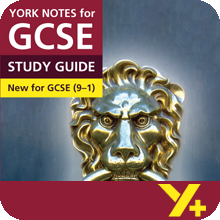Examiner's Notes
You assessed this answer as Grade 7.
Hover over the highlighted text to read the examiner’s comments.
Question: Read from ‘From the foldings of its robe, it brought two children’ to ‘This girl is Want’ (Stave Three, page 63). In this extract, Scrooge questions the Spirit about what is hidden beneath its robes.
Starting with this extract, explore how Dickens presents ideas about poverty.
Write about:
- how Dickens presents poverty in this extract through the description of the children
- how Dickens presents ideas about poverty in the novel as a whole.
The five words – ‘wretched, abject, frightful, hideous, miserable’ – that Dickens uses to present these children express his view of the pitiful effects of poverty on vulnerable people. He shows that even Scrooge is ‘appalled’ at their plight.
Their appearance at this stage in the story, immediately after the accounts of Christmas blessings that the Ghost of Christmas Present has shown to Scrooge across the country, creates a strong contrast. Dickens has used this contrast to highlight the inequalities between people. He continues his presentation of the children with more contrasts, for example referring to youth and age, and showing that in their faces ‘Where angels might have sat enthroned, devils lurked’.
The children are not given names. Dickens refers to them as ‘monsters’ and the Ghost names the boy ‘Ignorance’ and the girl ‘Want’. Dickens presents them in this impersonal way to show that they are symbolic of the problems in society. They remain in ignorance because they have no right to education, and want because nobody is looking after them. They do not speak, but their pleading gestures, kneeling at the Ghost’s feet and clinging to its garment, show their helplessness.
Dickens is using the children in this passage as a warning to Scrooge about the danger of neglecting the poor. The ghost tells Scrooge ‘Beware’ the boy who carries a warning of ‘Doom’ on his forehead; society will suffer if the problems of poverty are not addressed.
Dickens presents ideas about poverty in a similar way throughout the novel. The contrast between rich and poor is shown in Stave One between Scrooge and his employee Bob Cratchit; Scrooge is interested only in making money and meanly exploiting Cratchit. It seems as if Dickens blames wealthy businessmen for the poverty around them. For example, when Marley’s ghost appears it is weighted down with chains and symbols of money-making just as its guilt about failing to help others weighs down on its conscience.
The charity collectors who visit Scrooge show us the duty that rich Victorian people have towards the poor. From visiting workhouses and prisons Dickens knew that the law did not do enough to overcome poverty. He hints at conditions there when the gentleman tells Scrooge, ‘Many can’t go there; and many would rather die.’ On the other hand, Mr Fezziwig represents how the rich should treat the poor, especially at Christmas, making Scrooge feel guilty about his behaviour towards Bob Cratchit.
People’s experience of poverty is shown throughout the novel. As well as the children in this passage, Dickens presents poor families such as the Cratchits. He shows that they, including the children, are willing to work hard. In spite of being poor, they are a happy family, and through them Dickens conveys the idea that people can be rich in other ways than having money.
One consequence of poverty during the nineteenth century was debt. Dickens knew from experience that people were afraid of debt because they could end up in prison with their families separated. He makes this point in Stave Four when the Ghost of Christmas Yet to Come presents the only people in the town who feel emotion following Scrooge’s death: they feel only relief at having escaped their ‘merciless creditor’.
Dickens criticises social injustice and the features of Victorian society that keep people in poverty. He uses this story about Christmas to appeal to the Christian values of loving our neighbours during the happy celebration of Christmas because ‘it is a time … when Want is keenly felt and Abundance rejoices’. His message is the opposite of Scrooge’s ‘It’s not my business’. Marley’s ghost sums it up when he tells Scrooge, ‘Mankind was my business’.
